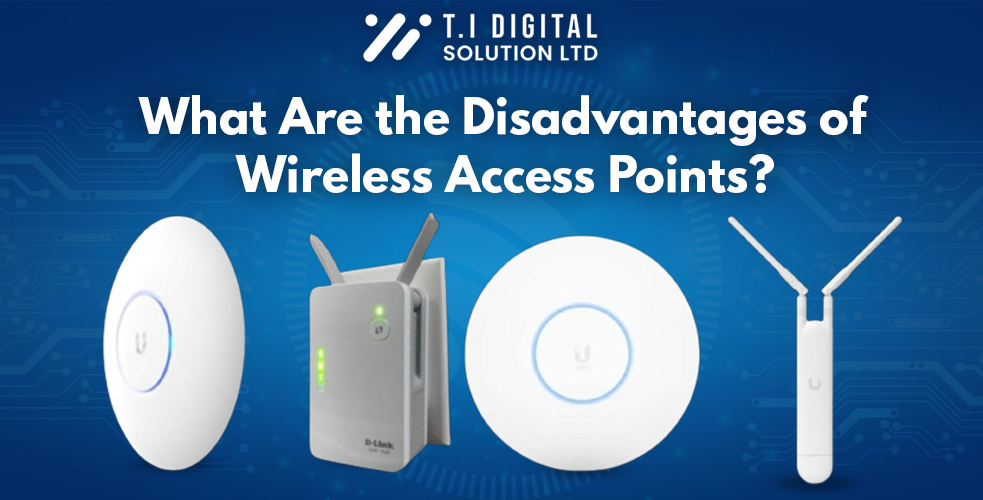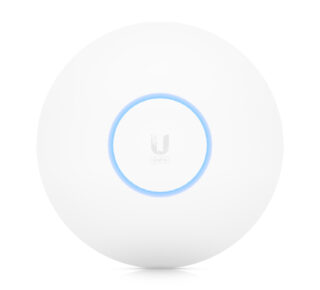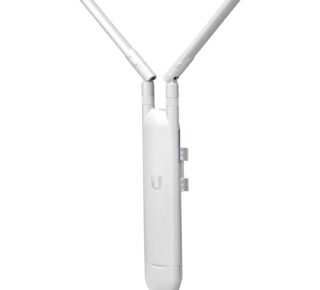Disadvantages of Wireless Access Points and Common Problems

Wireless access points (APs) are essential for extending the range and capacity of your network, especially in larger homes or businesses. They enable wireless devices to connect to the network without being tethered to cables, offering flexibility and ease of use. However, there are certain disadvantages and common issues that users should be aware of before installing or relying on wireless access points for their network.
What Are the Disadvantages of Wireless Access Points?
- Cost of Installation: Setting up multiple wireless access points can be costly, especially if you’re covering a large area or require high-end devices such as the Araknis wireless access point or Ubiquiti outdoor AP. The upfront cost of hardware and the labor for installation, along with ongoing maintenance, can make it an expensive option for smaller businesses or homes.
- Interference: Wireless access points, especially when used in high-density environments, can experience interference from other wireless networks, Bluetooth devices, and even household appliances. This can lead to slower speeds or intermittent connectivity issues. For example, users of Linksys wireless access points or Ubiquiti AP exterior models may experience decreased performance in crowded environments with a lot of signal overlap.
- Security Concerns: Wireless networks are more susceptible to hacking than wired networks. If not properly secured, wireless access points can become vulnerable to unauthorized access, leading to potential data breaches. While modern access points, including the U6-LR or U6-PRO from Ubiquiti, offer robust security features, they require regular updates and strong password protocols to ensure protection.
- Complex Management: Managing multiple wireless access points can become complicated, particularly in larger networks. IT staff will need to monitor traffic, adjust settings, and troubleshoot issues as they arise. Managed systems like the Aruba outdoor access point can alleviate some of this burden, but still require consistent monitoring.
Here is the comparison of our best selling Access Points

Ubiquiti UniFi U7-PRO
• WiFi Standard: WiFi 7
• Spatial Streams: 8 spatial streams
• Coverage: 140 m² (1,500 ft²)
• Connected Devices: 600+ connected devices
• PoE: Powered using PoE+ (802.3at)
• Uplink: 2.5 GbE RJ45 port

Ubiquiti UniFi U6-Pro
• WiFi Standard: WiFi 6
• Spatial Streams: 6 spatial streams
• Coverage: 140 m² (1,500 ft²)
• Connected Devices: 350+ connected devices
• PoE: Powered using PoE (802.3af)
• Uplink: 1 GbE RJ45 port

Ubiquiti AC Mesh UAP-AC-M
• WiFi Standard: WiFi 5
• Spatial Streams: 4 spatial streams
• Coverage: 140 m² (1,500 ft²)
• Connected Devices: 250+ connected devices
• PoE: Powered using PoE (24V Passive PoE or 802.3af)
• Uplink: 1 GbE RJ45 port
What Are the Common Access Point Problems?
- Signal Interference: One of the most common problems with wireless access points is interference from other devices. Devices like microwaves, cordless phones, or even another access point on the same channel can cause network disruption. Solutions like extreme access points are designed to handle these challenges, but even these can face difficulties in congested environments.
- Overcrowded Networks: When too many devices are connected to a single access point, network performance can slow significantly. This is a common issue in business settings where employees use multiple devices simultaneously. Access points like the UAP-AC-PRO or U6-MESH from Ubiquiti can help manage high volumes of traffic, but overcrowding can still lead to reduced speeds and connectivity issues.
- Hardware Failures: Like any technology, wireless access points can experience hardware failures over time. Devices like the U7-PRO are built to last, but power surges, wear and tear, or overheating can eventually lead to failure. Regular maintenance and monitoring can help prevent unexpected downtimes.
- Configuration Issues: Incorrect configuration of an access point can lead to poor performance. It’s important to properly configure the network settings, security protocols, and bandwidth allocation to optimize performance. For example, Ubiquiti outdoor access points have advanced settings that require proper understanding to avoid configuration errors.
Can a Wireless Access Point Interfere with a Router?
Yes, wireless access points can interfere with routers if they are not properly configured. When a wireless access point operates on the same channel as your router, it can cause signal overlap, leading to interference and reduced network performance. This is particularly true if you’re using multiple access points in close proximity.
To avoid this, it’s crucial to manually set channels on your wireless access points and routers. Devices like the U6-PRO or UAP-AC-M from Ubiquiti allow for advanced channel management to minimize interference with your primary router.
Are Wireless Access Points Worth It?
The decision of whether wireless access points are worth it depends on your specific network requirements. For large homes, businesses, or organizations that need reliable and expansive wireless coverage, wireless access points can be highly beneficial. Access points like the Aruba outdoor access point extend coverage to outdoor areas, making them ideal for large spaces or outdoor environments.
For smaller networks or homes with minimal wireless coverage needs, a high-quality router may be enough to handle the workload. However, for growing networks or businesses with large, spread-out office spaces, the flexibility and performance enhancements offered by wireless access points make them a valuable investment.
What Is the Downside of Access Points?
- Limited Range Compared to Wired Networks: Wireless access points offer flexibility but often provide a shorter range and less stability compared to wired networks. Ethernet cables can run much farther without signal degradation, while wireless signals can weaken over distances or through thick walls.
- Dependency on Internet Speed: Access points rely on your internet connection to provide stable service. If your internet service provider has issues or your broadband is slow, adding access points won’t improve the overall experience.
- Complex Setup: As mentioned earlier, setting up multiple wireless access points can be challenging, especially for non-technical users. Configuring settings, managing channels, and troubleshooting performance issues can become overwhelming without the help of a professional.
- Ongoing Maintenance: Access points require regular firmware updates, security management, and monitoring to ensure they remain functional and secure. Even advanced models like the U6-MESH or UAP-AC-PRO need ongoing care to maintain peak performance.
Conclusion
Wireless access points, while beneficial for expanding network coverage and improving connectivity, come with their own set of challenges. From interference and security concerns to configuration and maintenance issues, it’s important to consider the specific needs of your network before investing in access points. However, for larger networks or businesses, the advantages often outweigh the downsides, particularly when using high-quality devices like those from Ubiquiti, Aruba, or Linksys.
Links to our blog articles related to Access Points:
